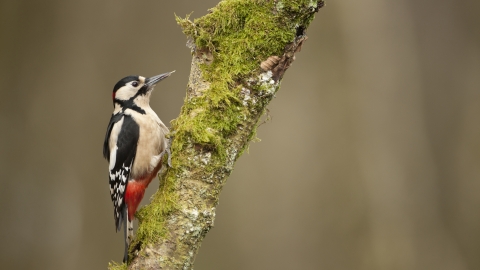
Oak woodland at Aughton Woods - Jenny Bennion

Mark Hamblin/2020VISION
Alan Wright
Location
Know before you go
Dogs
When to visit
Opening times
Open at all times.Best time to visit
Year-roundAbout the reserve
Aughton Woods is the kind of nature reserve that inspires poets and enthuses artists, especially during the springtime. Visit at this time of year and you’ll be overwhelmed by stunning carpets of azure bluebells that positively glow in the shafts of sunlight leaking through the trees.
But bluebells aren’t the only flowers that steal the show. Primroses, opposite-leaved golden-saxifrage, wood speedwell and foxgloves all grow in Aughton Woods, alongside various fern species and the very special wood fescue. The best place to see this rare UK grass is in the woodland’s damp ravines.
Aughton Woods’ remote location means you’ll be wrapped in a blanket of peace and solitude; birdsong the only sound. Look out for chiffchaffs, chaffinches and five species of tit as they flit from tree to tree, while nuthatches and treecreepers shimmy up the trunks and woodpeckers hammer into the bark. Excitingly, pied flycatchers are known to breed here, and evening walks may be haunted by the strange call of the woodcock.
As an ancient semi-natural woodland, Aughton Woods is interwoven with history. Abandoned charcoal heaths lay levelled out of the hillside and multi-stemmed trees grow up from stools last coppiced 70 – 100 years ago, when they were used for charcoal and leather tanning.
Small-leaved lime trees – considered indicators of ancient woodland – grow in the ravines along the western and southern edges of the wood, while Cole Wood brims with birch and Shire Oaks Wood is dominated by towering sessile oak trees.
Don’t discount the nearby River Lune, where oystercatchers and common sandpipers forage in the mud between February and August.
